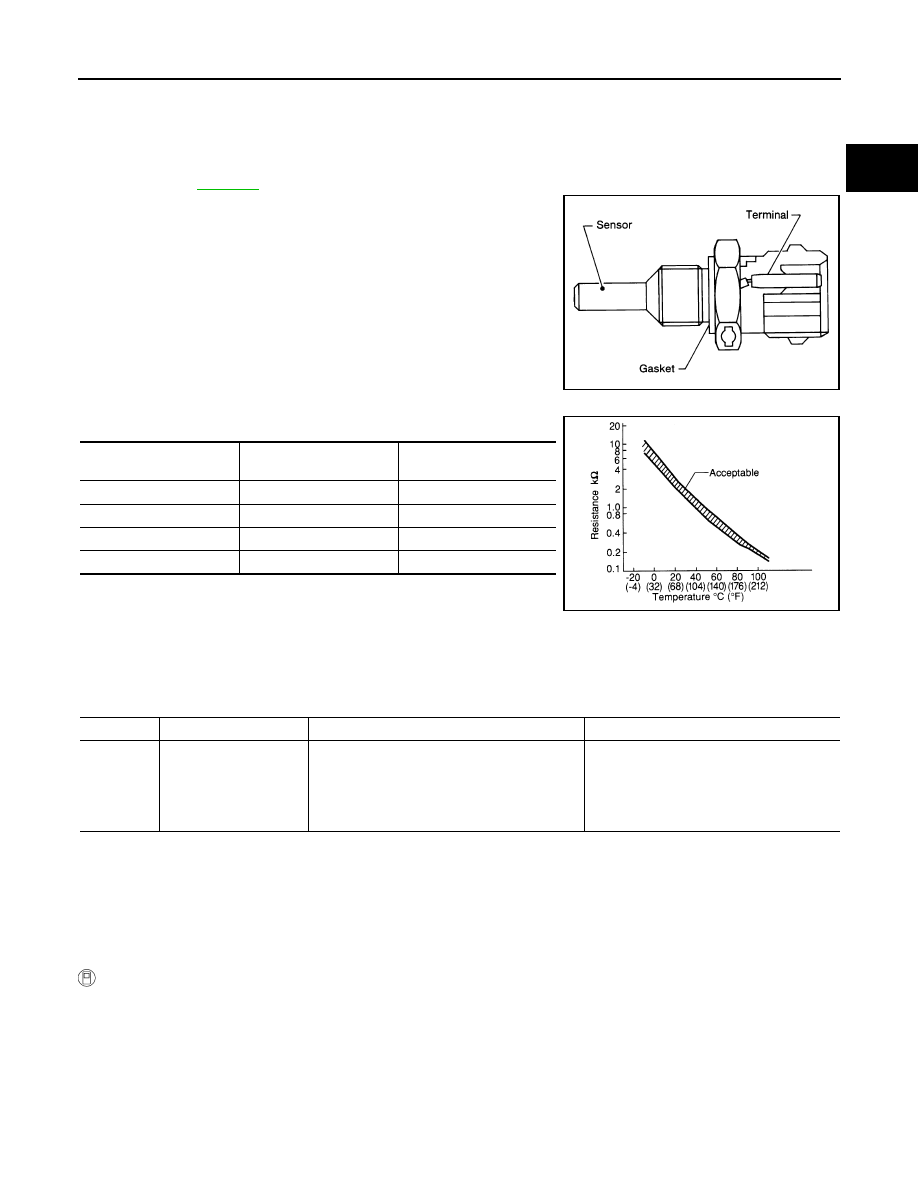Nissan Frontier D22. Manual - part 566

DTC P0125 ECT SENSOR
EC-1367
[VG33ER]
C
D
E
F
G
H
I
J
K
L
M
A
EC
DTC P0125 ECT SENSOR
PFP:22630
Component Description
UBS00DUH
NOTE:
If DTC P0125 is displayed with P0117 or P0118, first perform the trouble diagnosis for DTC P0117 or
P0118. Refer to
The engine coolant temperature sensor is used to detect the engine
coolant temperature. The sensor modifies a voltage signal from the
ECM. The modified signal returns to the ECM as the engine coolant
temperature input. The sensor uses a thermistor which is sensitive to
the change in temperature. The electrical resistance of the ther-
mistor decreases as temperature increases.
<Reference data>
*: These data are reference values and are measured between ECM terminal 59
(Engine coolant temperature sensor) and ground.
CAUTION:
Do not use ECM ground terminals when measuring input/output voltage. Doing so may result in dam-
age to the ECM's transistor. Use a ground other than the ECM terminals, such as the ground.
On Board Diagnosis Logic
UBS00DUI
DTC Confirmation Procedure
UBS00DUJ
CAUTION:
Be careful not to overheat engine.
NOTE:
If DTC Confirmation Procedure has been previously conducted, always turn ignition switch OFF and wait at
least 5 seconds before conducting the next test.
WITH CONSULT-II
1.
Turn ignition switch ON.
SEF594K
Engine coolant
temperature
°C (°F)
Voltage*
(V)
Resistance
(k
Ω)
−10 (14)
4.4
9.2
20 (68)
3.5
2.1 - 2.9
50 (122)
2.2
0.68 - 1.00
90 (194)
0.9
0.236 - 0.260
SEF012P
DTC No.
Trouble diagnosis name
DTC detecting condition
Possible cause
P0125
Insufficient engine cool-
ant temperature for
closed loop fuel control
●
Voltage sent to ECM from the sensor is not
practical, even when some time has passed
after starting the engine.
●
Engine coolant temperature is insufficient for
closed loop fuel control.
●
Harness or connectors
(High resistance in the circuit)
●
Engine coolant temperature sensor
●
Thermostat